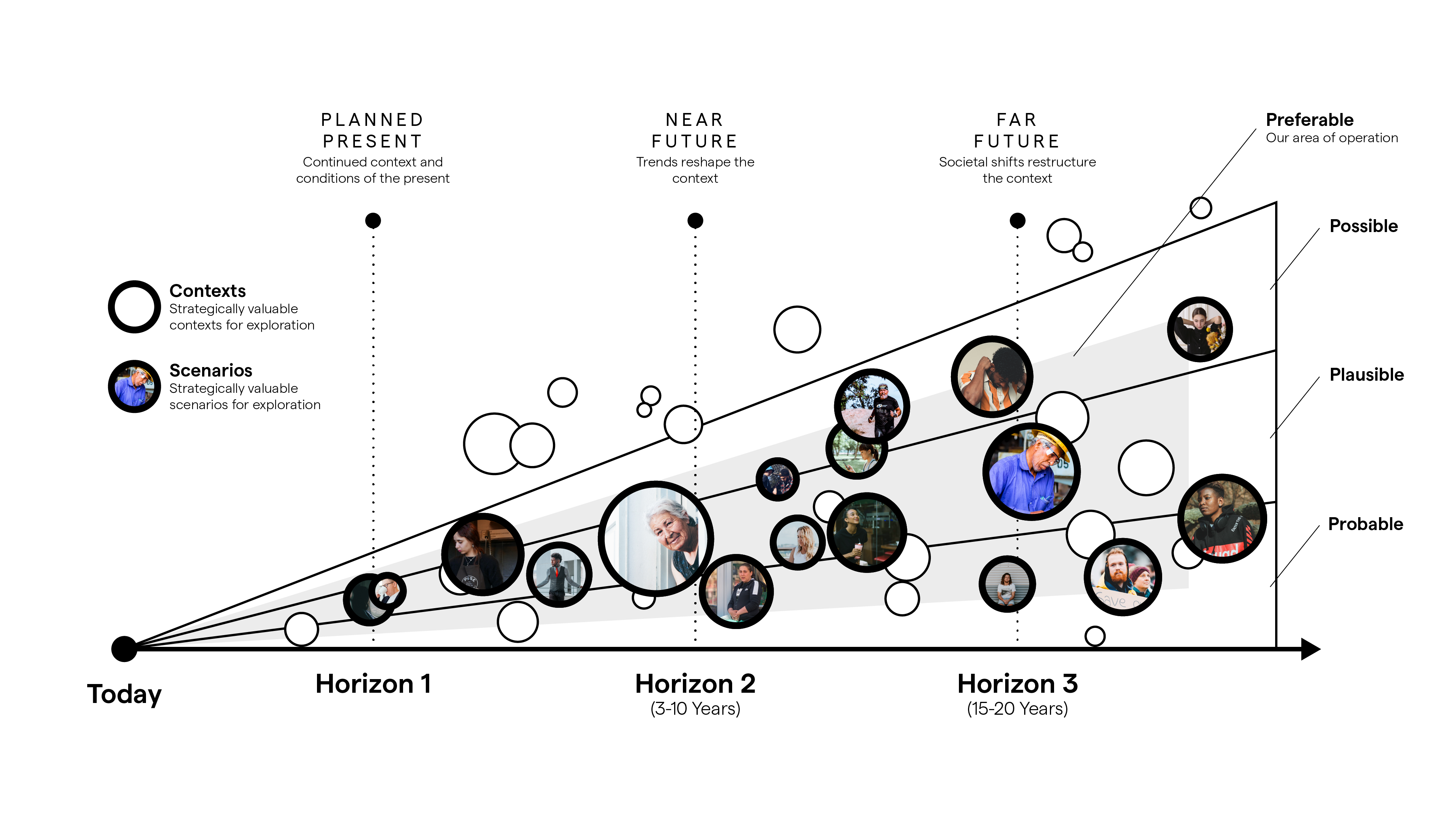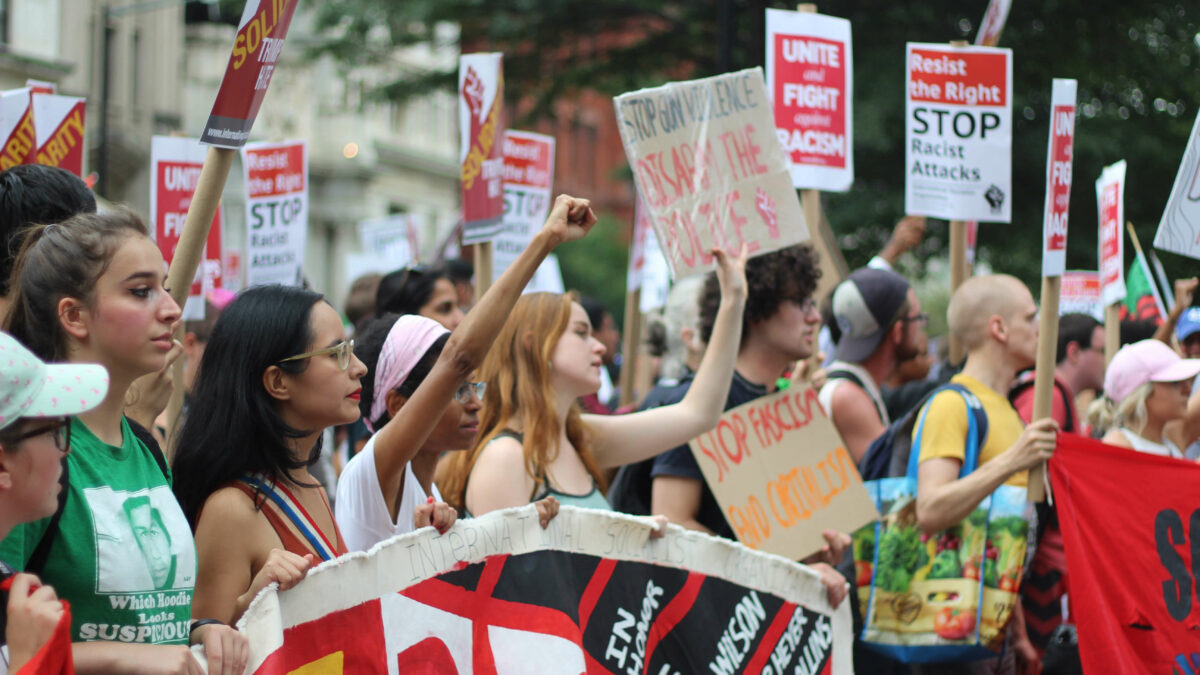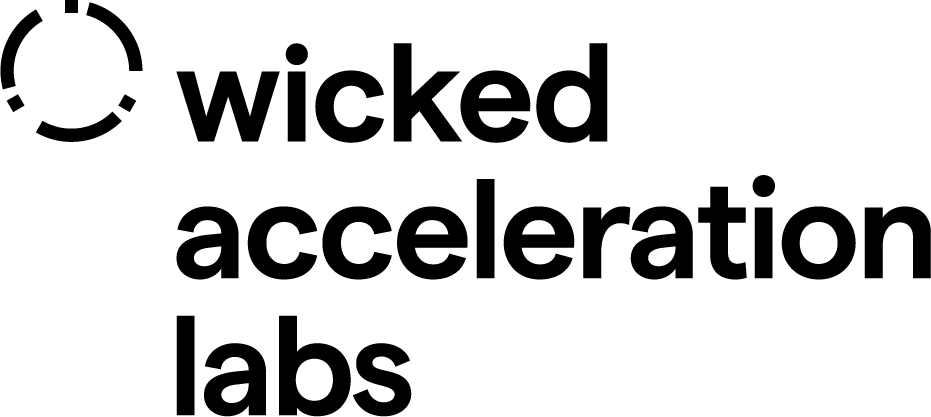Phase 1
Envision
Future Scenarios
Signals and trends of the future
An overview of our design approach
Stuart Candy’s Future Cone heavily influenced the approach of the “Envision Future Scenarios” phase.
Candy’s Future cone is a theoretical model that encourages the organisation of potential future outcomes into three categories of likelihood:
- What is probable
- What is plausible
- What is possible (but unlikely)
The model also prompts you to consider the outcomes that are preferable in relation to their likelihood, i.e. what is plausible is likely to be more innovative than what is probable and is therefore preferred.
The lab adapted the model to also depict three key timeframes in the future (based on McKinsey’s time horizons), which matched the strategy of Koa Health. Instead of depicting what was preferable out of a range of future outcomes, the lab depicted potential future contexts that were of strategic value to the organisation.
The lab’s role with Alpha was to expand the organisation’s collective imagination of what is plausible in order to create a larger scope of desirable futures, which they later hoped to make more probable through experimentation and development.
Therefore, the lab team mapped contexts of the future that were plausible and enriched those contexts with personas of future people in order to form full scenarios, which could later allow them to design in response to future needs of users.

The theory
To enact this design approach the lab explored the organisation’s imagination of future contexts by looking for future trends connected to their different areas of research.
Then, the lab identified contexts which were of strategic significance to the organisation based on what was plausible and compatible for the organisation. This enabled the team to identify a framework that organises potential future change into six societal dimensions.
These dimensions of change were then used as a framework to help the team focus user research on ‘extreme’ users that might be highly affected by each specific dimension of societal change. The combination of the needs of these future users with the scenarios of strategic importance, helped the lab select critical scenarios that were aligned with the company and relevant to future people.
The process
At the start of the project, before focusing on one or more specific directions, the lab team had two distinct areas to understand:
- First, the future context, which was understood by looking at signals of the future and trends that will shape it.
- Second, the organisation, which was understood by exploring the client’s strategy in depth.
The work in this phase explores these two areas, oscillating between the context (world and society of the future) and the organisation (the client), sharing what was created and understood in one area, with stakeholders in the other.
The output of this phase was a series of scenarios around the topic of health and happiness, based on both the lab team’s understanding of the organisational strategy and their learnings about the future world.
A scenario is a story that illustrates a possible future. In this project, scenarios include a context (which is a combination of trends that define the parameters of the scenario), a persona (which is an abstract representation of a user), and a short narrative about how the persona interacts with the context.
The phase is composed of three units:
Unit 1 is about defining the scope of exploration.
The lab team dove into two streams of research in parallel:
- Understanding the client’s strategy
- Exploring future signals and trends.
This resulted in trend tools that help to understand and expand the organisational imagination of potential future contexts and create a framework to organise our thinking on the different dimensions of societal change.
Unit 2 is about understanding the needs of future users to gain human insight.
This could later complement and define the strategic criteria to be used to prioritise the areas worth exploring further.
Unit 3 is about crafting scenarios.
The lab team then turned these scenarios into design challenges. Some were more aligned with the immediate strategy and others were set far in the future.
A design challenge is a question that usually starts with the formula “how might we”, and summarises a specific problem to address.
The scenario planning methodology had deeply influenced all the lab team’s work on designing scenarios (see frameworks section). The idea to take on this approach originated from an observation made by Dr Rafael Ramirez (Director of the Oxford Scenarios Programme and Professor of Practice). He thinks that when scenario planners create scenarios of the future, they tend to mistakenly apply existing mindsets to interpret and understand the meaning of future contexts, rather than trying to anticipate how a future mindset might interpret and understand future contexts. Essentially, he means that using the tools of the present to understand the future could likely create misleading interpretations.
The lab team realised they could not design the scenarios without first defining what the future contexts will look like and the needs of the individuals who will populate them. This last point was probably the most difficult to work on, as people tend to be generally biased by their current ways of seeing the world.
A key challenge was to go beyond the biases and understand that not only the contexts will look very different in the future, but also the people who will inhabit those contexts will have completely different needs.
Envision future scenarios
Discover how the lab team mapped plausible future contexts and developed personas of the future in order to create full scenarios.





